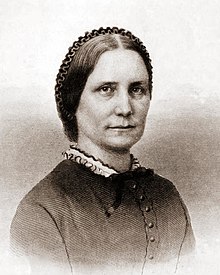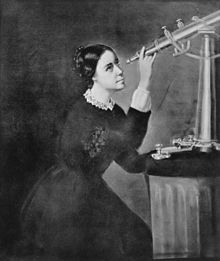
Martha McClellan Brown was an American lecturer, educator, reformer, newspaper editor, and major leader in the temperance movement in Ohio.

Lillie Devereux Blake was an American woman suffragist, reformer, and writer, born in Raleigh, North Carolina, and educated in New Haven, Connecticut. In her early years, Blake wrote several novels and for the press. In 1869, she became actively interested in the woman suffrage movement and devoted herself to pushing the reform, arranging conventions, getting up public meetings, writing articles and occasionally making lecture tours. A woman of strong affections and marked domestic tastes, she did not allow her public work to interfere with her home duties, and her speaking outside of New York City was almost wholly done in the summer, when her family was naturally scattered. In 1872, she published a novel called Fettered for Life, designed to show the many disadvantages under which women labor. In 1873, she made an application for the opening of Columbia College to young women as well as young men, presenting a class of girl students qualified to enter the university. The agitation then begun led to the establishment of Barnard College.

Sorosis was the first professional women's club in the United States. It was established in March 1868 in New York City by Jane Cunningham Croly.

Elizabeth Morrison Harbert was a 19th-century American author, lecturer, reformer and philanthropist from Indiana. She was the first women to design a woman's plank and secure its adoption by a major political party in a U.S. state.

Nancy H. Adsit was a 19th-century American art lecturer, art educator, and writer. A graduate of Ingham University, she contributed for half a century to art literature. Adsit was the first woman to enter the insurance field in the United States, and, as far as is known, in the world. She was possessed of an unusual combination: great literary ability and excellent business sense. At the age of 13, she assumed charge of her own affairs and her future education. Some of her early writings aroused great antagonism, and her identity was withheld by her editor. It was not until many years later that she acknowledged their authorship. On the death of her husband, Charles Davenport Adsit, of Buffalo, New York in 1873, she assumed the entire charge of his business and general insurance agency. After a very successful career in this line, she sold the business and resumed her writing. She contributed to the London Art Journal, writing an interesting series of articles for them on "The Black and White in Art" or "Etching and Engraving". This brought demands for lectures and parlor talks on art, and she began a course of classes for study. For many years, she delivered these lectures in the principal cities of the U.S., and her name was prominently connected with art education both in the U.S. and abroad. Adsit died in 1902.

Caroline Brown Buell was an American activist who lectured and wrote on behalf of temperance and suffrage. She served as the assistant recording secretary (1878–80), corresponding secretary (1880–93), and a member of the Our Union publication committee (1876–83) of the National Woman's Christian Temperance Union (WCTU); as well as the president (1904) and corresponding secretary (1875–86) of the Connecticut WCTU. She also originated the plan of the Loyal Temperance Legion, the children's society of the WCTU. Buell wrote extensively for temperance publications, and other papers and magazines. She made her home in East Hampton, Connecticut.

Rebecca A. Morse was an American club leader.

Margaret Eleanor Parker (1827–1896) was a British social activist, social reformer, and travel writer who was involved in the temperance movement. She was a founding member of the British Women's Temperance Association (BWTA) in 1876, and served as its first president. Born in England, Parker resided in Scotland. She was a delegate to the 1876 International Organisation of Good Templars (IOGT) meeting which led to the formation of the BWTA. She was also instrumental in founding the World Woman's Christian Temperance Union (WWCTU). In 1881, she founded another type of women's association, one which focused on horticulture and supply, but it did not flourish. Parker described her travels in the Eastern United States in Six Happy Months amongst the Americans (1874).
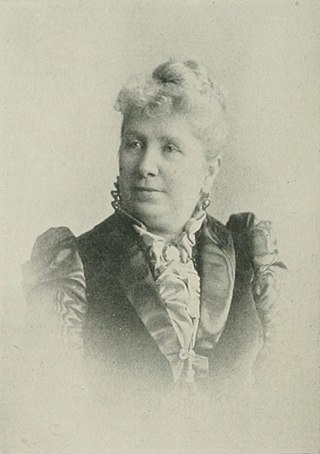
Jeanne de la Montagnie Lozier was an American physician and educator from New York City. She worked as an instructor of languages and literature in Hillsdale College from the age of nineteen, and after earning her medical degree from New York Medical College, became a professor of physiology. She was a delegate to the International Homoeopathic Congress in Paris in 1889 and was president of Sorosis Club from 1891 to 1894.

Emily S. Bouton was an American educator, journalist, author and editor. She was educated to become a teacher and took the highest position awarded to any woman as teacher in high school at Toledo, Ohio and Chicago, Illinois, but resigned them to engage on journalistic work on the Toledo Blade, position which she held for many years. She also wrote works on health and beauty for women and one on etiquette, beside pamphlets. She published books, wrote for the newspaper press and served as editor of the "Household", the "Saturday Salad" and the "Home Talk" columns of the Toledo Daily Blade. She was the author of Social Etiquette, Health and Beauty and other works more or less directly relating to women. Bouton died in 1927.

Jennie McCowen was an American physician, writer, and medical journal editor. She lectured on and supported woman's suffrage.

Ellen Alida Rose was an American practical agriculturist and woman suffragist. She was one of the first and most active members of the Grange. Through Rose's efforts and the members of the National Grange Organization, the anti-option bill was passed. She was a prominent member of the Patrons of Industry and by her lectures and publications, did much to educate the farmers in the prominent reforms of the day, in which the advancement of women was one which always interested her. Rose was an active worker in the National Woman Suffrage Association, and in 1888, was appointed District President of that organization.

Nellie V. Mark was an American physician and suffragist. In addition to looking after her medical practice, she lectured on personal hygiene, literary topics, and on woman suffrage. Mark served as vice-president of the Association for the Advancement of Women. She was a member of Just Government League of Baltimore, the Equal Suffrage League of Baltimore, the National Geographic Society, and the Arundell Club of Baltimore. Mark could not remember a time when she was not a suffragist and a doctor.
Charlotte Beebe Wilbour was an American feminist, speaker, and writer. She was one of the founders of Sorosis, the first professional women's club in America, as well as its president for many years, and one of the founders of the Association for the Advancement of Women. She was one of the pioneer leaders of the women's suffrage movement in America.

Octavia Williams Bates was an American suffragist, clubwoman, and author of the long nineteenth century. She was involved with women's movements associated with higher education and political enfranchisement. Bates was probably officially connected with more societies looking to these ends than any other woman of her time in Michigan, if not in the U.S. She traveled in various parts of the U.S. and Canada, and was specially interested in the woman suffrage movement. In 1899, after attending a conference in Baltimore, Maryland, Bates was so attracted to the city that she made it her permanent home.
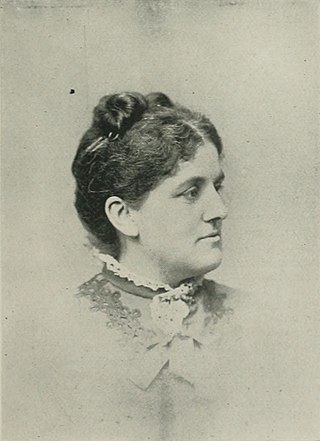
Harriette R. Shattuck was an American author, parliamentarian, teacher of parliamentary law, and pioneer suffragist. Shattuck served as assistant clerk of the Massachusetts House of Representatives in 1872, being the first woman to hold such a position. She wrote several books, including The Story of Dante's Divine Comedy (1887), Our Mutual Friend: A Comedy in Four Acts, Dramatized from Charles Dickens (1880), The "national" Method (1880), Marriage, Its Dangers and Duties (1882), Little Folks East and West (1891), Woman's Manual of Parliamentary Law (1891), The Woman's Manuel of Parliamentary Law (1895), Shattuck's Advanced Rules for Large Assemblies (1898), Our Mutual Friend: A Comedy, in Four Acts (1909), and Shattuck's Parliamentary Answers, Alphabetically Arranged (1915).
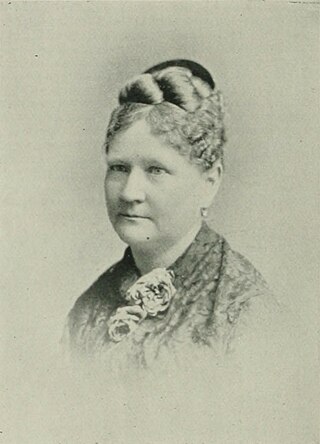
Sophia Curtiss Hoffman was an American philanthropist, known as the Helen Gould of the early 1870s. She was the founder of the benevolent institution known as the Chapin Home for the Aged, in New York City. She was also numbered among the reformers, as one of the first treasurers of the Association for the Advancement of Women, and a vice-president of the Woman's Centenary Association of the Universalist Church.
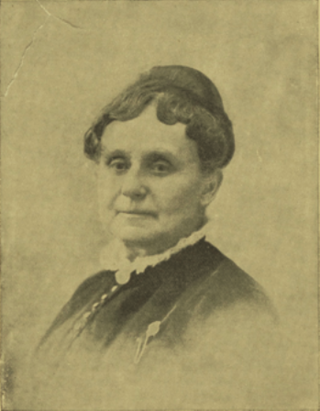
M. Louise Thomas was an American social leader in women's organizations in the late 19th and early 20th centuries. She was also a philanthropist of national repute. Thomas served as president of the Woman's Centenary Association of the Universalist Church (WCA), the fourth president of Sorosis, and the treasurer of the National Council of Women.
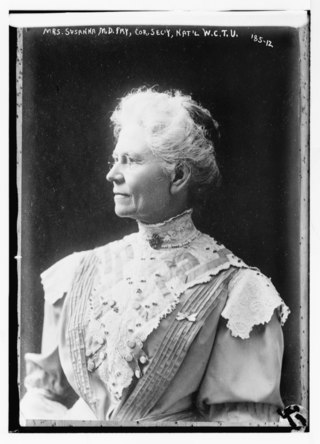
Susanna M. D. Fry was an American educator and temperance worker. Her teaching career began in the primary department of the village school, but her superior ability as a teacher led her swiftly into positions of greater responsibility. Fry was a professor who held the chair of English literature at Illinois Wesleyan University, Bloomington, Illinois and at the University of Minnesota. She served as president of the Minnesota Woman's Christian Temperance Union (W.C.T.U.), and managing editor of The Union Signal, the organ of the National W.C.T.U. During her career as a professor and as an official of the W.C.T.U., Fry was a frequent speaker in Prohibition campaigns and at temperance conventions. Fry was the only woman chosen from the Methodist church to speak before the Parliament of the World's Religions, 1893.
Woman's National Press Association (W.N.P.A.) was an American professional association for women journalists. The constitution declared that the object of the association was to advance and encourage women in literary work, and to secure the benefits arising from organized effort. Any woman who had published original matter in book form, or in any reputable journal, was entitled to membership. Any woman's press association could become auxiliary to this association by subscribing to its constitution and paying ten percent per capita annually into its treasury. Established in Washington, D.C., July 10, 1882, it ended its activities in the mid-1920s.

